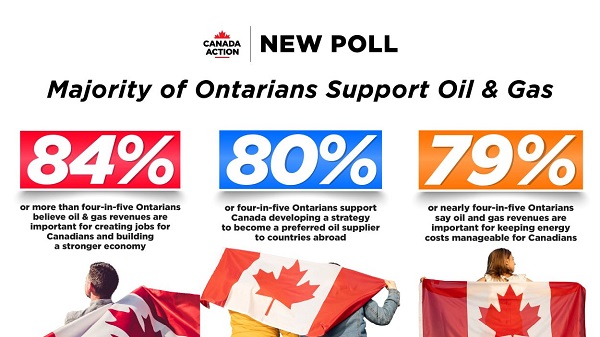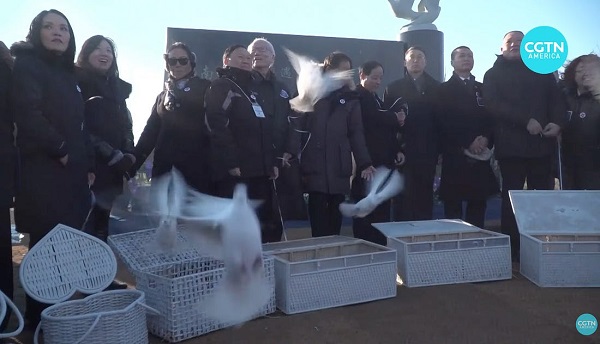By Clare Marie Merkowsky
” B.C. could experience power shortfalls beginning in 2026 as the New Democratic Party (NDP) government continues to phase out natural gas. “
A report has found that the Canadian province of British Columbia’s electric grid is becoming increasingly inadequate as the government goes forward with plans to phase out natural gas power generation by 2030.
According to a December report by the North American Electric Reliability Corporation, British Columbia’s electric grid is “at risk of shortfall” in extreme weather conditions, such as the conditions which shut down its power grid last October.
“That should be a wake up call and should shake us out of our complacency that we have enough electricity to meet all of our potential desires, whether it’s electrification of vehicles, industry or home heating,” said Barry Penner, former B.C. cabinet minister and current employee of Resource Works.
The report warned that B.C. could experience power shortfalls beginning in 2026 as the New Democratic Party (NDP) government continues to phase out natural gas for power production.
Also in December, FortisBC, the province’s natural gas company, proposed to expand the province’s natural gas infrastructure in the ever-expanding Okanagan by building a new pipeline between Chute Lake and Penticton.
The suggestion was rejected by B.C. Utilities Commission, however, which continues to dismiss the warnings that the government’s plan poses a threat to energy reliability. Instead, the BCUC has argued that the demand for natural gas may decrease as the CleanBC climate plan banning natural gas space and water heating in new homes by 2030 is further implemented.
B.C. is at the forefront of the push to outlaw natural resources. According to their climate plan, newly constructed homes will be primarily heated with options like electrical baseboard heat, while a heat pump will be installed to kick in at -20 degrees Celsius. Additionally, the provinces is pushing for all new vehicles sold in 2035 to be fully electric.
B.C.’s climate plans come as last week Canadians across Alberta witnessed first-hand the instability and insufficiency of an electric power grid and renewable energy sources.
As LifeSiteNews previously reported, amid a cold snap in Western Canada that saw temperatures in some regions drop to nearly minus 50 degrees Celsius (-58 degrees Fahrenheit) over the weekend, the power grid in Alberta neared collapse due to inadequate production from renewable sources such as solar and wind.
In response to the situation, the neighboring province of Saskatchewan, which was also facing the same cold snap, announced it would be providing Alberta with electricity to stabilize the grid.
Many, including Saskatchewan Premier Scott Moe, noted that the incident served as a stark reminder of the potential dangers of a looming federal mandate calling for an eventual end to oil and gas power production in favor of less reliable wind and solar power.
“SaskPower is providing 153 MW of electricity to AB this evening to assist them through this shortage. That power will be coming from natural gas and coal-fired plants, the ones the Trudeau government is telling us to shut down (which we won’t),” wrote Moe on X (formerly Twitter) at the time.
During the outage, Canadians were also asked to delay charging their electric vehicles, which Conservative Party of Canada (CPC) MP Leslyn Lewis argued shows how Trudeau’s green agenda, which looks to ban sales of new gas-powered cars starting in 2035, is “unrealistic.”
The Trudeau government’s current environmental goals – which are in lockstep with the United Nations’ “2030 Agenda for Sustainable Development” – include phasing out coal-fired power plants, reducing fertilizer usage, and curbing natural gas use over the coming decades.
The reduction and eventual elimination of so-called “fossil fuels” and a transition to unreliable “green” energy has also been pushed by the World Economic Forum – the globalist group behind the socialist “Great Reset” agenda in which Trudeau and some of his cabinet are involved.
Even the recent energy crisis has not stopped the Trudeau government from pushing their radical agenda, which is apparently unaware or unsympathetic to Canadians suffering from the cold and power outages.
Just last week, Deputy Prime Minister Chrystia Freeland told attendees at the World Economic Forum’s (WEF) 2024 meeting in Davos that it is up to the government to “make” sure the “decarbonization” of Canada’s energy sector “happens.”
However, some western provinces have declared they will not follow the regulations but instead focus on the wellbeing of Canadians.
Both Alberta and Saskatchewan have repeatedly promised to place the interests of their people above the Trudeau government’s “unconstitutional” demands, while consistently reminding the federal government that their infrastructures and economies depend upon oil, gas, and coal.
“We will never allow these regulations to be implemented here, full stop,” Alberta Premier Danielle Smith recently declared. “If they become the law of the land, they would crush Albertans’ finances, and they would also cause dramatic increases in electricity bills for families and businesses across Canada.”
Saskatchewan Premier Scott Moe has likewise promised to fight back against Trudeau’s new regulations, saying recently that “Trudeau’s net-zero electricity regulations are unaffordable, unrealistic and unconstitutional.”
“They will drive electricity rates through the roof and leave Saskatchewan with an unreliable power supply. Our government will not let the federal government do that to the Saskatchewan people,” he charged.

























